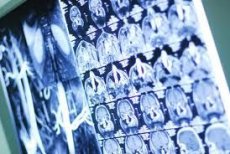Scientists have discovered a way of "reading the thoughts" of a person
Last reviewed: 16.10.2021

All iLive content is medically reviewed or fact checked to ensure as much factual accuracy as possible.
We have strict sourcing guidelines and only link to reputable media sites, academic research institutions and, whenever possible, medically peer reviewed studies. Note that the numbers in parentheses ([1], [2], etc.) are clickable links to these studies.
If you feel that any of our content is inaccurate, out-of-date, or otherwise questionable, please select it and press Ctrl + Enter.

A striking method of reconstructing words that exist only in the form of thought in the human brain was demonstrated by American researchers.
The "mind reading" method described in the publication of PLoS Biology magazine is based on the collection of electrical signals sent by the brain.
The patients listened to the audio recording of various words, the instruments fixed the signals that appeared in the brain, and then, using a computer model, the scientists reconstructed the words "sounded in the head" of the patients.
It turned out that each word corresponds to its unique set of brain impulses.
This method in the future can help those in coma or paralyzed patients to communicate with others.
Deep in the brain
The discoveries of recent years have shown that scientists are getting closer to a method that will allow them to directly "connect" to human thoughts.
Participants in a 2010 study conducted by neuroscientists from Missouri and New York managed to control the cursor on the computer screen with the power of thought - through electrodes connected directly to the brain. Saying "inwardly", in thoughts, individual vowels, they moved the cursor in the right direction.
The method, called " functional magnetic resonance imaging, " opened up new perspectives-it was possible to identify specific words or concepts, through which the person thinks at the time, by tracking the blood flow of the brain.
In September 2011, a group of researchers from the University of California Berkeley, led by Jack Gallant, took this method into service.
Think "Aa"
After studying the routes of blood flow that correspond to specific images emerging in consciousness, scientists demonstrated how the schemes of these routes allow one to guess which image or picture the subject thinks - in fact, to reconstruct the mental "movie" that "spins" in the person's head.
Now, another scientist from Berkeley, Brian Paisley, along with his colleagues went even further along the path of "reconstruction of thought patterns."
"We were much inspired by Jack's work," says Dr. Paisley, "There was only one question: how deep can you penetrate the human hearing system using the same method of computer modeling?"
The key gyrus
Researchers focused on one part of the brain - the upper temporal gyrus.
This part of the auditory system is one of the most highly organized parts of the brain, responsible for extracting a certain meaning from the stream of sounds, distinguishing words and understanding their linguistic significance.
The team of experimenters tracked the wave signals of the upper temporal gyrus in 15 surgical patients during operations for the treatment of epilepsy or the removal of brain tumors.
The patients lost an audio record, on which various speakers read out the words and sentences.
The most difficult was to unravel the chaotic flow of electrical pulses that occurred in the temporal lobe when listening to an audio recording.
Using a computer model, a "map" was compiled, indicating which areas of the brain and with what intensity impulses are sent, when the ear hears sounds at different frequencies.
Then the patients were given a choice of words, from which one had to choose one and think about it.
It turned out that the same computer model allows you to guess which word the subject chose.
Scientists have even managed to recreate some words by transforming the fixed brain impulses back into sound waves according to the computer "map".
Double Effect
"This work allows you to kill two birds with one stone," says one of the authors of the study, professor of the University of Berkeley Robert Knight. "First, fundamental science has now penetrated deeper into the mechanisms of the brain."
"And from an applied point of view, people with speech impairments may be able to use this technology: when they can not talk, they will imagine what they want to say in their thoughts," explains Knight. "The patients gave us valuable information, and it would be good to thank them in this way. "
Authors of the report warn, however, that there is a huge work to improve the technique of "reading thought images", and the device deciphering thoughts will not appear soon.
